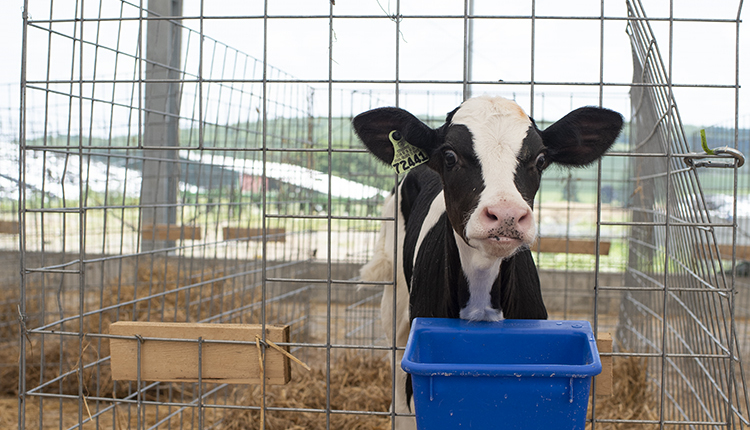
What job on your farm would you like to make easier?
There are many possible answers to this question, but a top contender for many would likely be disbudding calves. Although necessary to ensure animal and employee safety, removing horns is complicated to do easily while still being effective.
In recent decades, though, we have added tools to the toolbox that can improve the process for calves, farm owners, and farm workers. “We still want healthy calves, we still want disbudding to be easier, but we have different ways of doing it,” noted Sylvia Kehoe in a University of Wisconsin-Madison Badger Dairy Insight webinar.
She said that doing the job “easier” can be defined in a few ways. For the farm owner, it means the herd has no horns, with no hassle, at a low cost. The person doing the disbudding also wants an easy job that can be done consistently. The calf is going to want a painless procedure that can be done quickly and correctly the first time.
The common theme here is doing a job that works and that is easy, said the University of Wisconsin-River Falls animal science professor. Overall, disbudding needs to be safe for the calf as well as the person performing the task. Kehoe shared that farms can meet these goals by having standard disbudding procedures in place, using a lidocaine block and non-steroidal anti-inflammatory drug (NSAID) for pain relief, and keeping employees prepared and trained.
Know your game plan
Disbudding can be done inconsistently with a hot iron or caustic paste, she emphasized, so having the right methods outlined for employees reduces the chance a calf has to be disbudded a second time or later in life. A University of Wisconsin survey found that 74% of farms had to re-paste calves and 30% had to use a hot iron a second time.
Caustic paste is recommended for use in the first three days of life, or even up to seven days. Kehoe emphasized that paste use depends on growth of the horn bud so it can be applied effectively. However, horn growth appears to vary by calf so there needs to be some flexibility in the process, she noted. Whether you use paste or an iron, clipping the hair around the horn bud is optional, but communicate that decision with your employees.
Kehoe, who does the disbudding at the UW-River Falls dairy, reminded that the FARM program outlines that herds should use pain control when disbudding, even with caustic paste. In the case of the NSAID meloxicam, which is used for pain relief like ibuprofen would be, she directed administering the medicine about 11 hours before disbudding so the drug has time to kick in.
Then, give a lidocaine block about 20 minutes before disbudding to numb the cornual nerve. Your veterinarian can help you learn how to administer the treatment, Kehoe said. Generally, you want to pinpoint the area halfway between the horn bud and corner of the eye. “It’s definitely a lot easier and a lot safer for the calf and especially the worker,” she said of using the lidocaine. This numbing will also result in less movement and irritation after paste application, meaning the calf is less likely to rub it off before the horn bud is killed.
As pain is managed for the calf, Kehoe also emphasized that caustic paste can be dangerous to employees. She advised keeping vinegar available with the disbudding materials to neutralize the product. “Paste does not wash off with water,” she added. Giving workers the tools to keep themselves safe allows them to do their job correctly, and that’s easier for everyone.








